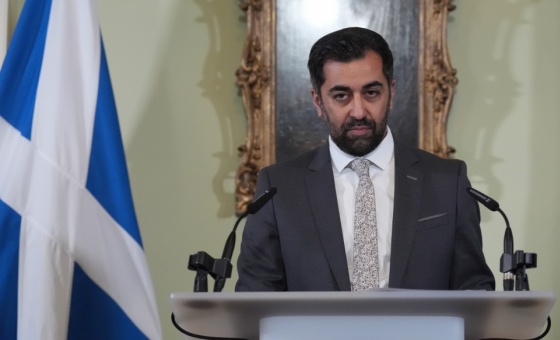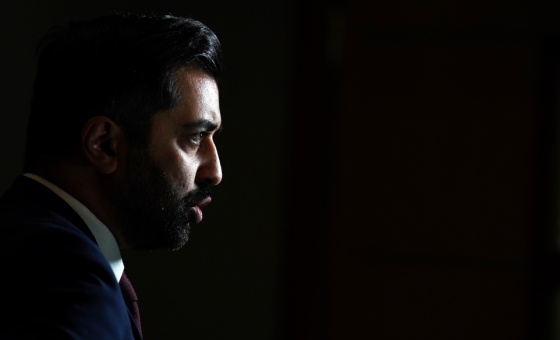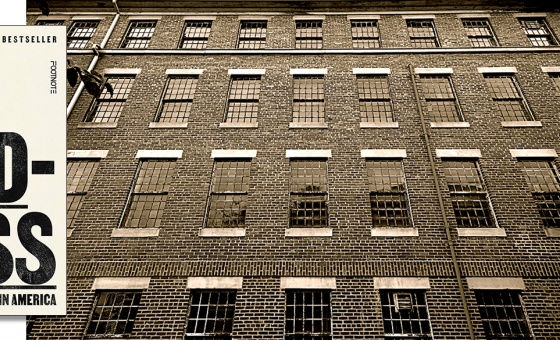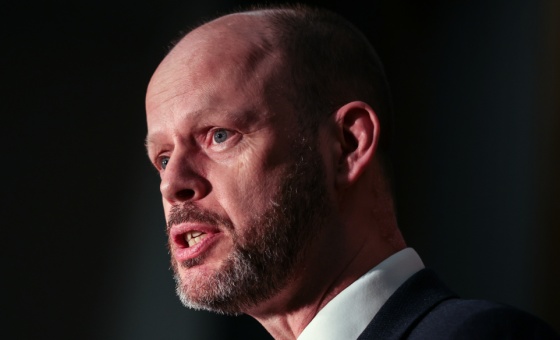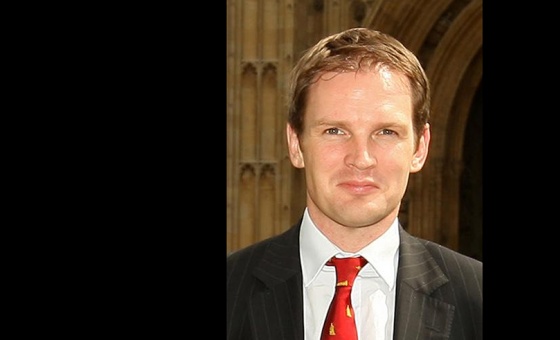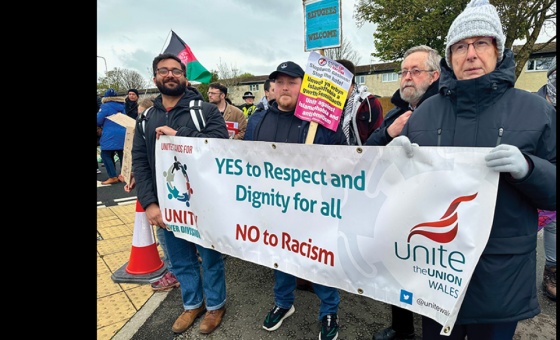This is the last article you can read this month
You can read more article this month
You can read more articles this month
Sorry your limit is up for this month
Reset on:
Please help support the Morning Star by subscribing here
BETTY SINCLAIR was born into a Church of Ireland, working-class family in Hooker Street, the Ardoyne area of Belfast. Her father was a worker in the Harland and Wolff shipyard and a “Walkerist” (pro-unionist) socialist; her mother was a reeler in Ewart’s mill.
The 1911 census shows that Betty lived with her mother Margaret, her father Joe and brothers William, Thomas and Joseph and her younger sister Ellen. It is thought that perhaps Joseph died at an early age as little is known about him.
As a young girl she lived for a short period with her aunt in Leeds, she described this as being a happy period in her life and found living in Leeds an improvement to Belfast.
After leaving school at the age of 15 she became a mill worker alongside her mother.
Little is known about her personal life, but in an interview in 1980 she spoke to me about her marriage to John Lytle, her husband who was not supportive of Betty being active in politics.
She gave birth to twins who died shortly after childbirth. She left her husband and went back to the family home. In the interview, it was clear that she saw this as a very unhappy period in her life.
In the interview, Betty said that her father and elder brother Billie were very supportive of her.
As an active trade unionist, she was elected to the Belfast and District Trades Union Council, of which she was secretary from 1947 to 1975, and became a full-time worker for.
In 1931 she began to attend meetings of the Revolutionary Workers’ Group, forerunner of the Communist Party of Ireland (CPI) and in 1932 she became a member. The same year she played an active part in the leadership of the outdoor relief struggle when tens of thousands of unemployed and employed workers took part in huge anti-sectarian demonstrations that shook the Unionist regime to its foundations.
In response, demonstrations were banned and a curfew was declared. Two demonstrators were shot dead by the British Army and another demonstrator, who was arrested and sentenced to three months’ imprisonment, died later from mistreatment.
These were the first large-scale, anti-sectarian political demonstrations in the north of Ireland and the last until the advent of the Northern Ireland Civil Rights Association in the 1960s (in which Betty was also to play a leading part).
Some of the strikers’ demands were met, after which the Stormont regime intensified its promotion of sectarian division. Anti-communism was also driven by some in the religious sector.
From 1933 to 1935 Betty attended the Lenin School in Moscow. On her way to Moscow, the ship stopped off in Hamburg. She said: “It was horrible, there were Christian emblems and Christmas decorations mixed up with fascist symbols and slogans, I couldn’t wait to get back on the ship.” Papers in Moscow show that in the early 1930s Betty was a courier for the Comintern.
In 1940 Betty was imprisoned for publishing a Sinn Fein article in the Communist Party’s newspaper Red Hand.
The article was pro-fascist, and argued that if Hitler won the war it would be to the benefit of Ireland and would help achieve a united Ireland. The Communist Party published this to expose SF policy which it opposed and countered with another article.
The SF article had no byline, so as one of the editors, Betty was held responsible for its publication and she received a two-month prison sentence in Armagh jail. She demanded political prisoner status and was upset that she did not get it.
In the 1930s she took part in supporting the anti-fascist war in Spain and in helping with Spanish aid.
In the 1945 election for the Northern Ireland parliament she stood as a CPI candidate and received 4,000 votes.
Also with the Belfast Trades Council and others, she campaigned for Paul Robeson to get his US passport back. In 1958 she met Robeson when he came to Belfast as part of a worldwide tour.
The photograph of her at Queen’s University stood pride of place on her mantelpiece at home. She said, “You know, he had a voice like velvet and he did two concerts in Belfast because we worked so hard for him.”
In 1967, Betty was a founding member of the Northern Ireland Civil Rights Association and its first chairperson. Her work in civil rights should not be underestimated.
In the 1970s she lived and worked in Prague as the Irish representative on the international editorial board of World Marxist Review.
However, she continued to play an active role in the Belfast Trades Council, and in 1971 met with Joyce McCartan and Lynda (Edgerton) Walker, in the trades council office (top floor) in Waring Street (now the Premier Inn), to help them draw up a petition in opposition to the withdrawal of school milk.
In 1981, shortly before she died, she organised the centenary event for the Belfast Trades Council, held in Belfast City Hall, a venue that was not popular because it was unionist-dominated, but Betty considered that the City Hall belonged to all the workers of the city.
Sadly Betty died in 1981 as a result of a fire in her flat in east Belfast.
Betty lived a hard but meaningful life; she was proud to have met Paul Robeson and Valentina Tereshkova (the first woman in space), and so many people who shared with her the view that the world must become a better place.



